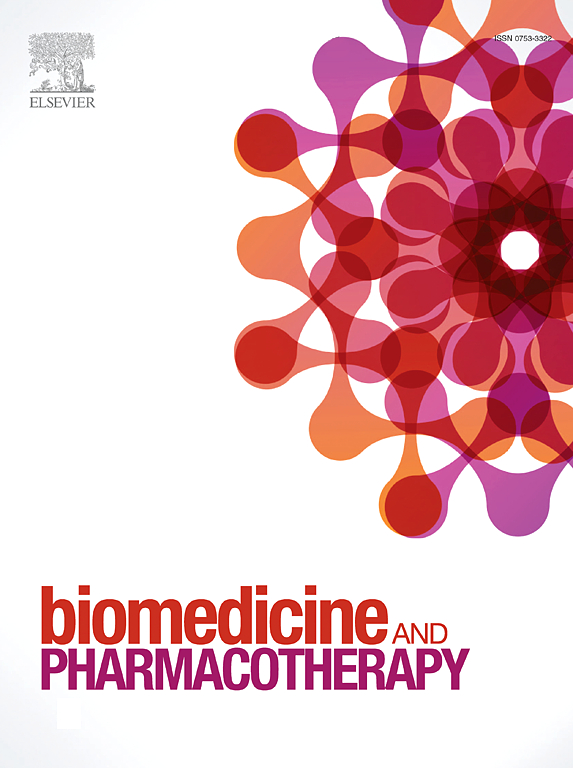Doxorubicin and topotecan resistance in ovarian cancer: Gene expression and microenvironment analysis in 2D and 3D models
IF 6.9
2区 医学
Q1 MEDICINE, RESEARCH & EXPERIMENTAL
引用次数: 0
Abstract
This study explores the mechanisms underlying chemotherapy resistance in ovarian cancer (OC) using doxorubicin (DOX) and topotecan (TOP)-resistant cell lines derived from the drug-sensitive A2780 ovarian cancer cell line. Both two-dimensional (2D) monolayer cell cultures and three-dimensional (3D) spheroid models were employed to examine the differential drug responses in these environments. The results revealed that 3D spheroids demonstrated significantly higher resistance to DOX and TOP than 2D cultures, suggesting a closer mimicry of in vivo tumour conditions. Molecular analyses identified overexpression of essential drug resistance-related genes, including MDR1 and BCRP, and extracellular matrix (ECM) components, such as MYOT and SPP1, which were more pronounced in resistant cell lines. MDR1 and BCRP overexpression contribute to chemotherapy resistance in OC by expelling drugs like DOX and TOP. Targeting these transporters with inhibitors or gene silencing could improve drug efficacy, making them key therapeutic targets to enhance treatment outcomes for drug-resistant OC. The study further showed that EMT-associated markers, including VIM, SNAIL1, and SNAIL2, were upregulated in the 3D spheroids, reflecting a more mesenchymal phenotype. These findings suggest that factors beyond gene expression, such as spheroid architecture, cell-cell interactions, and drug penetration, contribute to the enhanced resistance observed in 3D cultures. These results highlight the importance of 3D cell culture models for a more accurate representation of tumour drug resistance mechanisms in ovarian cancer, providing valuable insights for therapeutic development.
卵巢癌中阿霉素和拓扑替康耐药:2D和3D模型的基因表达和微环境分析。
本研究利用从药物敏感的A2780卵巢癌细胞系衍生的多柔比星(DOX)和拓扑替康(TOP)耐药细胞系,探讨卵巢癌(OC)化疗耐药的机制。采用二维(2D)单层细胞培养和三维(3D)球体模型来检查这些环境中的不同药物反应。结果显示,3D球体对DOX和TOP的抗性明显高于2D培养,表明更接近体内肿瘤条件的模拟。分子分析发现,基本耐药相关基因(包括MDR1和BCRP)和细胞外基质(ECM)成分(如MYOT和SPP1)的过表达在耐药细胞系中更为明显。MDR1和BCRP过表达通过排出DOX和TOP等药物参与OC的化疗耐药。用抑制剂或基因沉默靶向这些转运蛋白可以提高药物疗效,使其成为提高耐药OC治疗效果的关键治疗靶点。该研究进一步表明,emt相关标记,包括VIM, SNAIL1和SNAIL2,在3D球体中上调,反映了更多的间充质表型。这些发现表明,基因表达之外的因素,如球体结构、细胞间相互作用和药物渗透,有助于在3D培养中观察到的抗性增强。这些结果强调了3D细胞培养模型对于更准确地表示卵巢癌肿瘤耐药机制的重要性,为治疗开发提供了有价值的见解。
本文章由计算机程序翻译,如有差异,请以英文原文为准。
求助全文
约1分钟内获得全文
求助全文
来源期刊
CiteScore
11.90
自引率
2.70%
发文量
1621
审稿时长
48 days
期刊介绍:
Biomedicine & Pharmacotherapy stands as a multidisciplinary journal, presenting a spectrum of original research reports, reviews, and communications in the realms of clinical and basic medicine, as well as pharmacology. The journal spans various fields, including Cancer, Nutriceutics, Neurodegenerative, Cardiac, and Infectious Diseases.

 求助内容:
求助内容: 应助结果提醒方式:
应助结果提醒方式:


